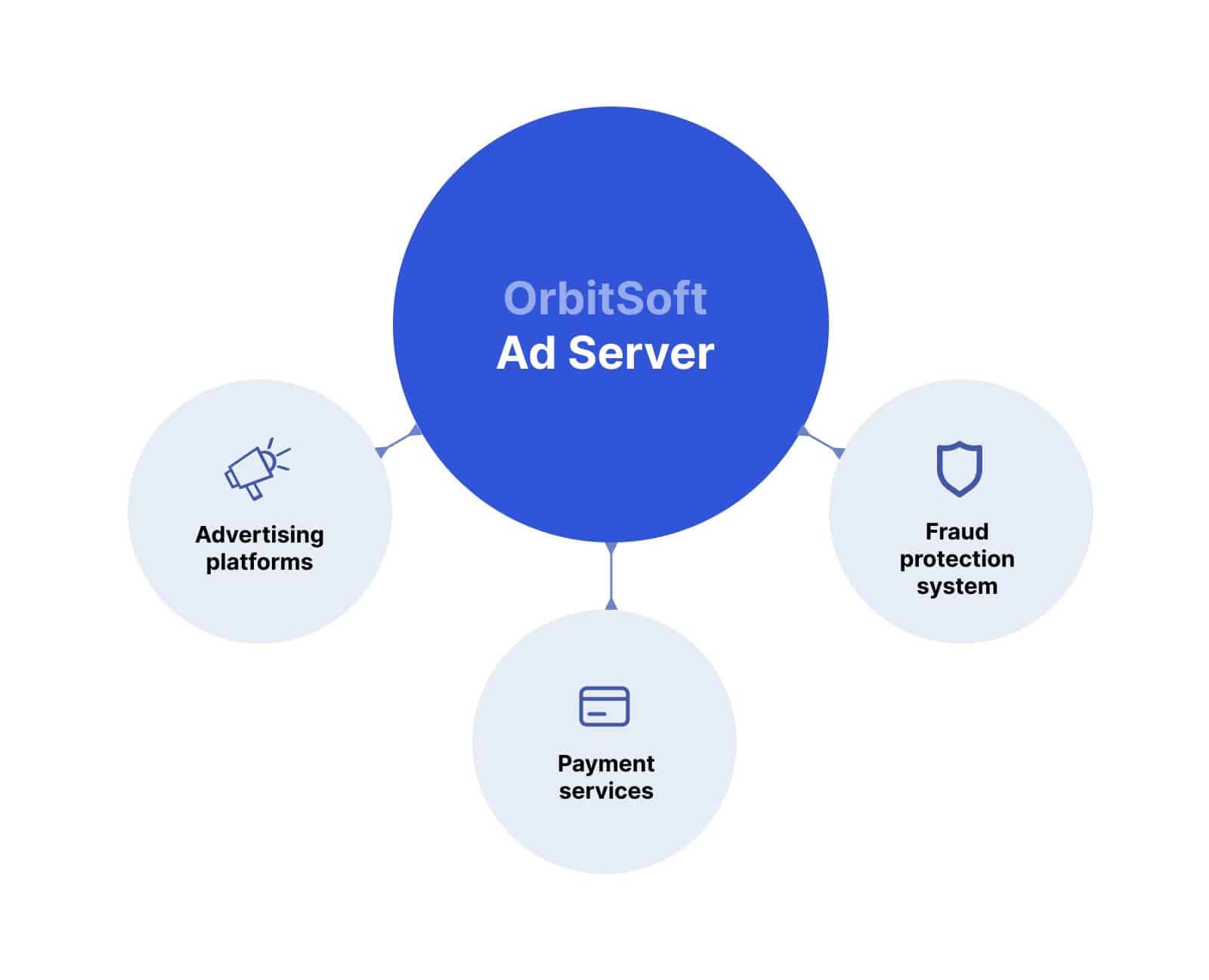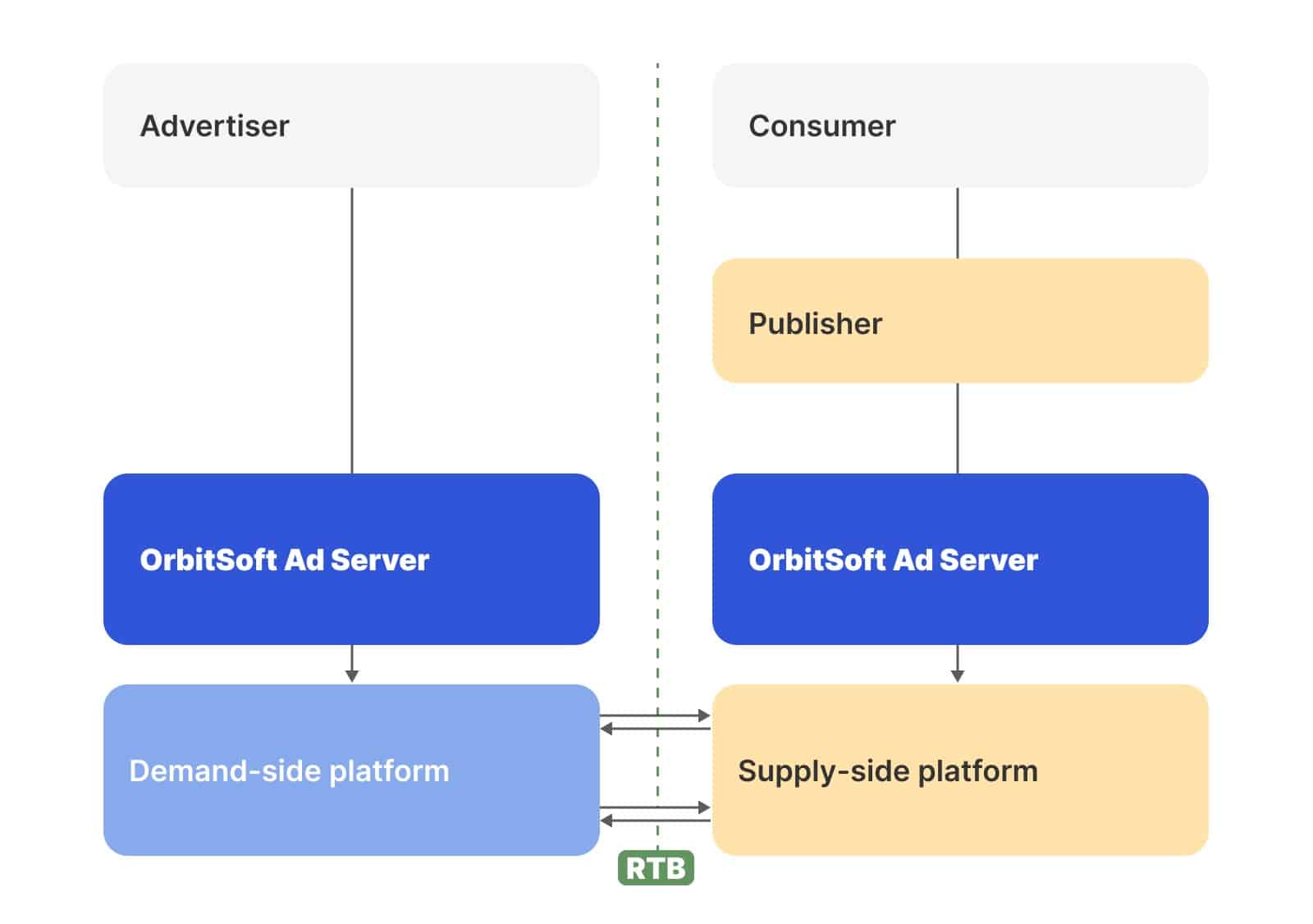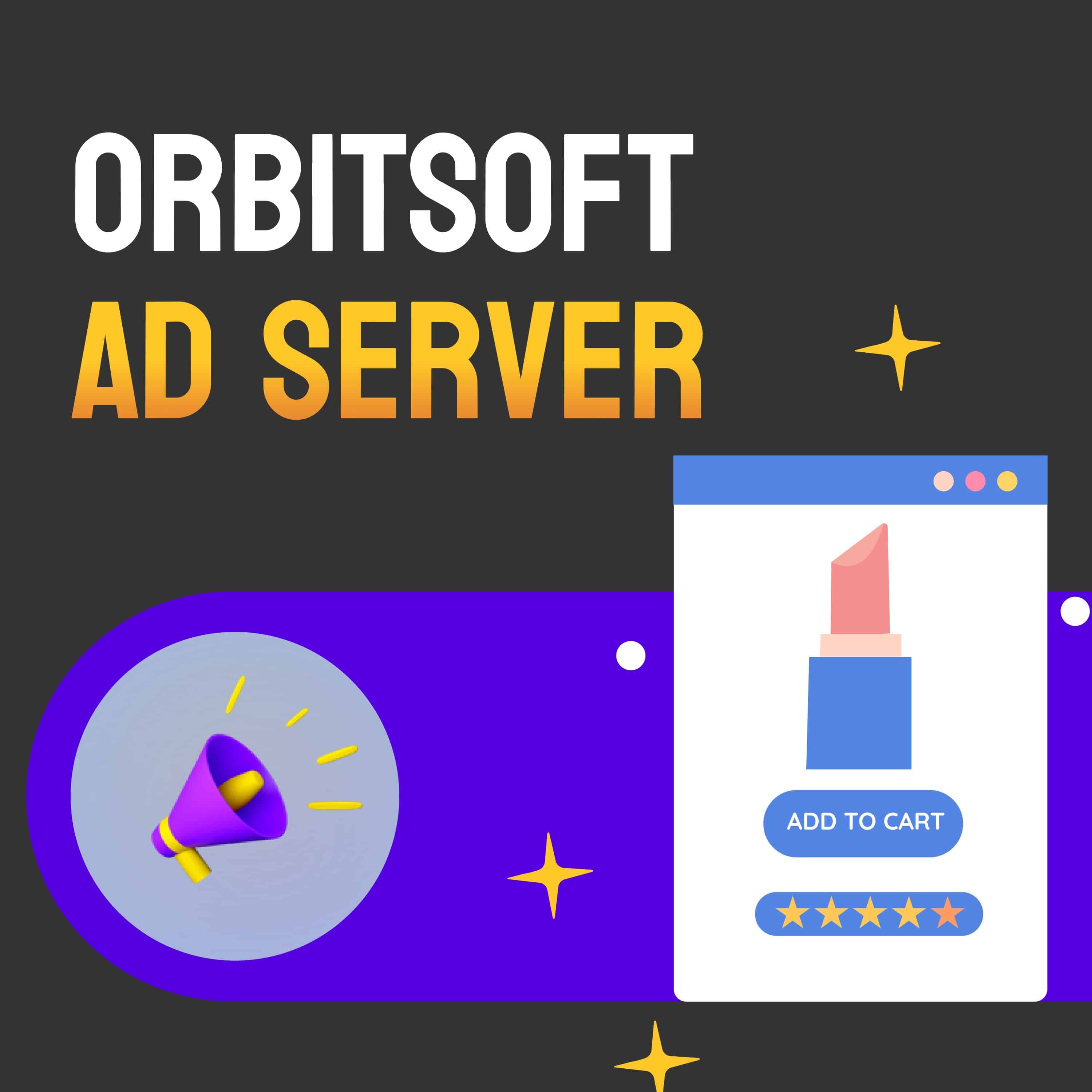OrbitSoft Ad Server is a digital ad management platform
Companies — from small to large — call for advertisements to promote their goods and services. Website owners and publishers need to monetize their platforms, and placing ads on websites is a sure-fire way to getting revenue. A mediator is required for the both parties to interact seamlessly, and a platform for automating ad display appears to be a great facilitator here.
OrbitSoft Ad Server connects content publishers to advertisers. Publishers place the information about ad spots and placing conditions, including ad formats and cost, on the platform. Advertisers upload ads and manage ad campaigns, i.e., select the target audience, set up the parameters for ad display on platforms and regulate the budget.
The main OrbitSoft Ad Server functions include:
- Targeting and segmentation. It allows for ad display only to the selected target audience, according to the country, language, browser, device type, operating system and other criteria.
- Planning ad displays. OrbitSoft Ad Server enables the advertiser to launch campaigns for a definite period of time, for instance, for discount validity period, and schedule ad display, i.e., post them on the weekends, on Monday evenings or mornings.
- Statistics on the campaigns. The platform gives the advertiser the opportunity to track the outcomes of the ad campaigns, i.e., analyze data on conversions, the budget spent, and from which users the ads generate the biggest response. This data helps the advertiser find out which ads are efficient and which of them to replace.
You can read more on OrbitSoft Ad Server here.
Ad Server is not an isolated platform. It consists of several elements integrated with one another.
We have integrated OrbitSoft Ad Server with ad platforms, payment gateways and anti-fraud systems to receive data on ad campaigns, receive the payment from advertisers and ensure safety for the users. The platform efficiency is directly affected by the number of these integrations. We are going to detail the way they work.

The Architecture of OrbitSoft Ad Server
The platform itself consists of 4 components:
1. The Dashboard is a website on which the users log in and get access to the platform functions. The user can take the following roles:
- Website owners add info about their platforms, create their channels (the place for ad display on the website), set their size and ad content type, e.g., an image, a video, or a pop-up.
- Advertisers can create and customize ads and select the platforms for ad display.
- Agencies act on behalf of their clients, i.e., advertisers.
- An admin manages the whole platform and the rights of certain users.

2. The Database stores the statistics and information about users, campaigns, websites and channels.
3. Side Services are engaged into the processes that do not require direct communication with the users. They run on schedule and carry out a certain task, e.g., process statistics or make reports. Side Services access the database to fulfill it.
4. Ad Display Services possess microservice architecture. It consists of several parts, and each of them works with a definite type of tasks, e.g., search, data receival and storage. These parts interact with each other by creating a single system.
Primarily, the architecture used to be solid. It is an option for quick product launch, testing ideas, MVPs and start-ups. Nevertheless, the solid architecture takes risks. If one of the components stops working, the whole system is down.
When the product grew more complex and there appeared the necessity to scale it, we transitioned to a microservice architecture. This provided a wide range of advantages, including:
- Each microservice is based on the logic and a certain number of functions. It simplifies the development and testing of the whole platform.
- One can work on each microservice separately, without running the risk of affecting the whole system. If one service is down all the rest stops working.
- Microservices simplify load distribution. It is possible to distribute it between different servers, and they communicate with each other seamlessly.
The architecture and technologies OrbitSoft Ad Server is based on ensure the possibility of customizing the platform in accordance with client’s needs. For instance, it is possible to select the ad format and the place for its display on the website or change the interface.
| OrbitSoft Ad Server stack in 2010 | OrbitSoft Ad Server stack in 2023 |
| PHP (CodeIgniter, Zend) Database Management System MySQL | PHP (CodeIgniter, Zend, Symfony) Database Management System MySQL Elastic Search Kafka Go Java Prometheus и Grafana |
OrbitSoft Ad Server Integration
Advertising Platforms
A DSP (Demand-Side Platform) is an automated platform that helps advertisers buy ads on websites from content publishers. Ad Server follows RTB specification to interact with the DSP. It is an open standard that defines the way various systems in advertising should exchange information about ad queries and proposals.
By interacting with the DSP, AdSErver functions as an SSP (Supply-Side Platform). It is an ad platform that helps content publishers sell ad spots. Ad Server decides which ad and for which bid to display to each website visitor for both publisher and advertiser to make as much profit as possible.
How it works:
- Being a platform for selling ads, OrbitSoft Ad Server publishes available ad spots on the auction.
- OrbitSoft Ad Server receives ad queries from various DSP providers and participates as one of DSPs as well. Sometimes DSPs take much time to respond. A timeout has been provided for the Ad Server not to wait for slow services. If the time is up, the platform stops waiting for a reply from a DSP.
- OrbitSoft Ad Server selects an ad for a display and puts it on the publisher’s website. The platform supports first and second price auctions.

Payment Gateways
Several payment gateways are integrated into OrbitSoft Ad Server. Some of them only receive payments, the others allow cash withdrawal or even perform both functions.
The way a user sees a payment gateway:
- Advertisers replenish their balance for ad campaigns in their personal account via their credit cards, cryptocurrency or PayPal.
- Publishers fill in their payment details to withdraw their money. The platform addresses a payment gateway to confirm the operation.
The way a developer sees a payment gateway:
- The platform processes a request to a payment gateway via API or SDK, i.e., a number of tools, libraries and documentation for app development, including the API of a certain platform. As a rule, such SDKs are given by the payment gateway for a wide range of programming languages.
- The platform receives either the payment outcomes or the information about its being placed on a waiting list.
- The payment service requests the URL of the processing party, along with the billing information.
- The query processing process ends up with a change in the balance or a notification about the payment error.
Ad Anti-Fraud Systems
As a rule, fraudsters aim at stealing the ad budget with the help of click frauds. A company pays for ad traffic, but their competitors use bots to click on the ads instead of real users. The company ends up wasting their budget.
In order to avoid such misleading practices, we have integrated OrbitSoft with protection systems against ad fraud. They contain mechanisms and algorithms that identify and block scammers.
The way anti-fraud works in OrbitSoft Ad Server:
- Analyzes users' behavior. The platform studies user activity and searches for unusual behavior patterns. For example, as a rule, it takes a user 1−2 seconds to study an ad, decide if the offer appeals to them and hover over the ad. If the click happens right after the ad display or, vice versa, in a couple of hours, the bot is highly likely to have done that. The admin specifies a time interval, based on which the platform identifies if a user or a bot have clicked on it.
- Blocks through IP, if the ad display and click happen from one and the same device.
- Reacts and notifies. When a system defines a fraud it may block the access of fraudulent sources to ads or temporarily stop displaying them on certain platforms. The anti-fraud system makes a report on the detected cases of fraud for advertisers and website owners.
The OrbitSoft Ad Server integration with other systems helps optimize the outcomes of ad campaigns and regulate the budget. It also simplifies the process by automating ad specialists' work.

